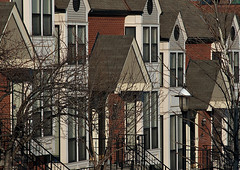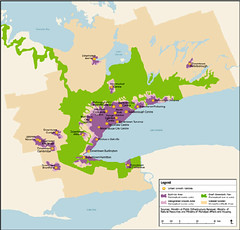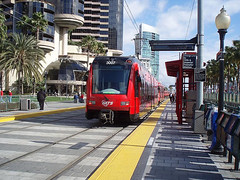An open letter to the next president on sustainable development (part 2)

Posted August 13, 2008 at 1:57PM
Dear Mr. President-elect*:
As I was saying last time, America is entering a period of unprecedented growth and building that will challenge us as a people. To maximize the quality of life for all Americans in a climate of growing demands for limited financial and environmental resources, we will need the best of American skill and ingenuity, and we will need enlightened and dedicated leadership from our highest-ranking officials.
An agenda for sustainable development
To that end, I propose that your administration take the initiative to shape a national agenda for sustainable development. Although this has never been done before, the time has come when we can no longer afford to be merely reactive to the problems that come with unplanned growth.
If you are like most CEOs, I know you don't have time to read something lengthy, so I am going to be brief. We can help you with the details later. To get to it, I urge that you build a more detailed plan around four basic goals for sustainable development:
- Help states and communities reinvest in our cities and in our older towns and suburbs. Nothing you can do for helping people while you help the environment will be more important.
 Many of us in the land-use field would be honored to work with your staff to create programs and incentives for redevelopment, with guidelines to make sure that building is inclusive, mixed-income, walkable, and transit-accessible. Give priority to vacant, abandoned, and foreclosed properties, and to locations close to public transit stations.
Many of us in the land-use field would be honored to work with your staff to create programs and incentives for redevelopment, with guidelines to make sure that building is inclusive, mixed-income, walkable, and transit-accessible. Give priority to vacant, abandoned, and foreclosed properties, and to locations close to public transit stations.
Building (and rebuilding) where we already have infrastructure rejuvenates communities, displaces sprawl, shortens car trips, and makes efficient public transportation more feasible. It is simply the best way to conserve financial and environmental resources while reducing the amount of development we are spreading across the rural landscape. It is also a great way to bring services and opportunity to long-neglected populations. Look at Dudley Street in Boston, Old North in St. Louis, and the rebuilding of North Charleston (SC) for great examples of the kind of community involvement and reinvestment that can make our cities great again, if we can provide the right kind of help.
- Initiate strong programs for growth planning and performance achievement at the metropolitan scale. Our overwhelming multiplicity of
 local jurisdictions and municipalities – greater Chicago had over 250 of them by one recent count – creates competition and inconsistency that practically guarantee chaos in our transportation patterns and blights on our landscape. This needs to change.
local jurisdictions and municipalities – greater Chicago had over 250 of them by one recent count – creates competition and inconsistency that practically guarantee chaos in our transportation patterns and blights on our landscape. This needs to change.
Metropolitan planning organizations are already in place in most regions, and some have done outstanding work. But much of their best work is only advisory. We need to strengthen our MPOs with a set of performance goals and strong achievement incentives to help their regions accommodate growth while reducing automobile dependence and per-capita carbon emissions, reducing per-capita infrastructure spending, maintaining housing affordability, and conserving our watersheds, forests and farms beyond the suburban fringe. We also need to provide assistance to regions and communities for updating outmoded zoning regulations, whose emphasis on uniformity and single-use districts too often stands in the way of innovative practices.
Where we have implemented great planning, it has produced great results. Portland substantially reduced greenhouse gas emissions and automobile use per resident between 1990 and 2005 while increasing transit usage 75% and tripling bicycling, even though emissions and driving in other cities soared. Arlington, Virginia nearly quadrupled housing and office space growth along a subway line while maintaining lovely neighborhoods single-family homes nearby and experiencing only negligible increases in automobile traffic. Across the border, the province of Ontario is implementing a terrific plan that will allow greater Toronto to grow by nearly 3 million residents in 30 years, through walkable, transit-supported neighborhoods, while preserving a 2-million acre greenbelt just outside the developed area. Let's develop initiatives that help our metro regions replicate these successes.
- Build a world-class public transportation system. Just as we built a world-class Interstate Highway System beginning in the 1950s, today we need to marshal our national resources to build a state-of-the-art system of public mass transportation that reduces pollution while strengthening our communities and efficiently taking people where we need to go.
 More Americans are turning to public transit now than at any time in the last 50 years, and ridership is soaring, but systems are straining to meet the demand.
More Americans are turning to public transit now than at any time in the last 50 years, and ridership is soaring, but systems are straining to meet the demand.
Serving the new, more populous America will be a much more demanding task than we have had before, and we will need more efficient ways of getting around than we have today. Today, extensive availability of transportation services coupled with compact development patterns enable Europeans to take public transportation to work four times more frequently than Americans. Only 41 percent of tips in Amsterdam are made by car.
While matching that level of performance may take time, especially outside of our very largest US cities, there is no reason why a world-class system of attractive, comfortable, frequent, coordinated and convenient buses, streetcars and subways cannot become the mode of choice for many more Americans.
- Make basic green building mandatory. Given advances in building materials and systems technology in recent years, it is no longer as burdensome as it once was to incorporate basic low-carbon and resource-conserving features into new homes, office buildings,
 schools and other structures. Yet the results in improved environmental performance can be dramatic. To reduce carbon emissions and resource waste, every new building in the United States should meet basic green standards such as those promulgated by the United States Green Building Council. We can use public loans to finance any additional costs associated with the green technology, since increased energy and water efficiency pays for itself over the long run.
schools and other structures. Yet the results in improved environmental performance can be dramatic. To reduce carbon emissions and resource waste, every new building in the United States should meet basic green standards such as those promulgated by the United States Green Building Council. We can use public loans to finance any additional costs associated with the green technology, since increased energy and water efficiency pays for itself over the long run.
We all know that we must reduce our nation’s carbon emissions (38 percent from buildings; 32 percent and the fastest growing portion from transportation), and also that we must absorb the impacts of our expanding population in a much more sustainable way than we have in the past. But we can do it, using the best of American business and know-how working under supportive policies. Imagine a country of walkable neighborhoods, shorter commutes, transportation choices, healthy homes, less time stuck in traffic, and more disposable income, complemented by a beautiful landscape of working forests, productive farms, and conserved environmental lands. It is what my friend John Norquist, former mayor of Milwaukee, calls “the convenient remedy to the inconvenient truth,” and it is within our reach with vision and leadership.
A lot of us are hoping, Mr. President-elect*, that you will supply that vision and leadership.
Offered with great respect for your office,
Kaid____________________
*(whoever you turn out to be)
Reminder to readers: Comments on the substance are always fair game, but we cannot accept comments on candidates or the election. Thanks.